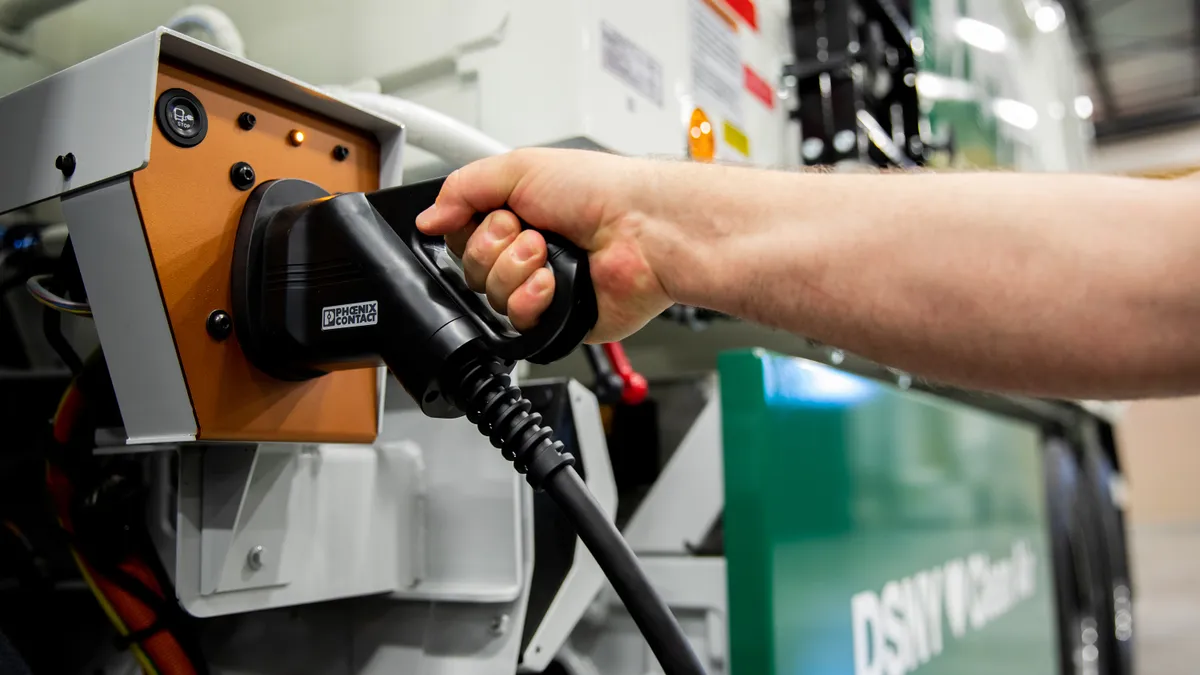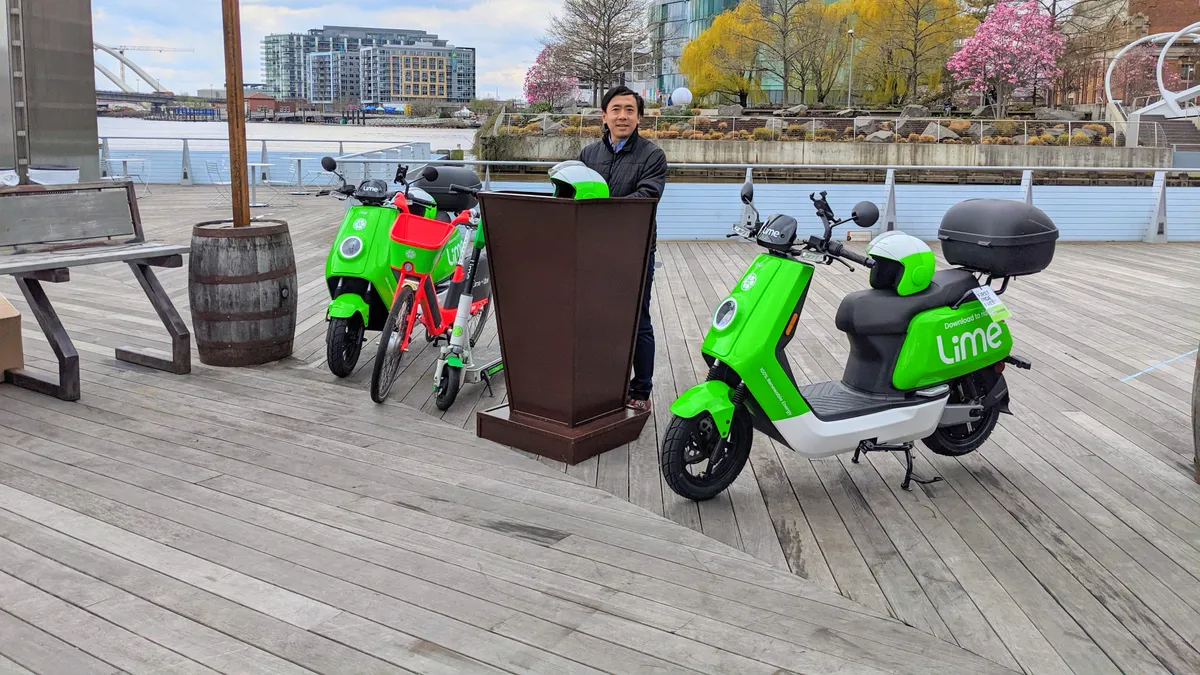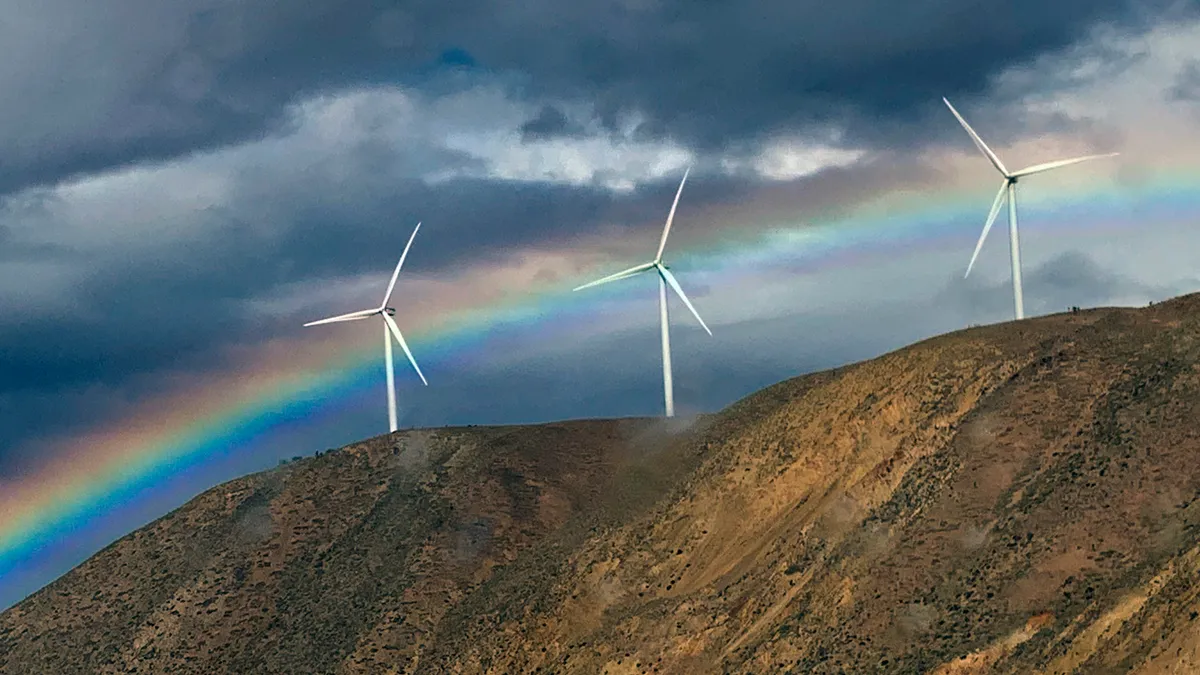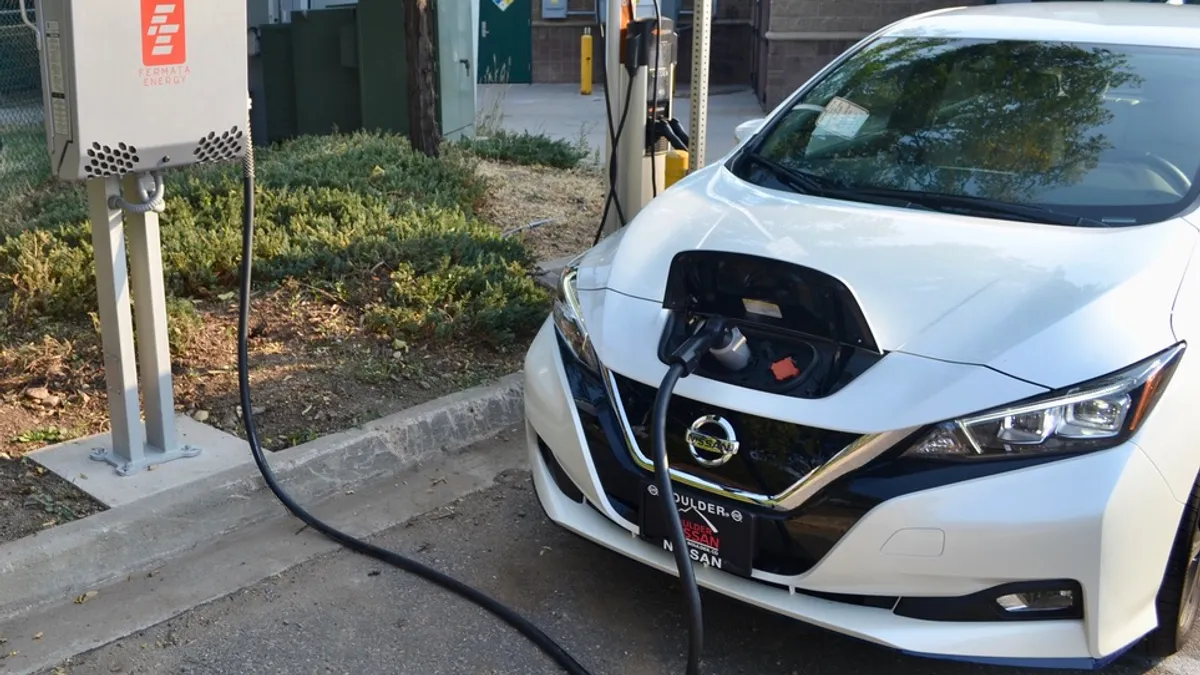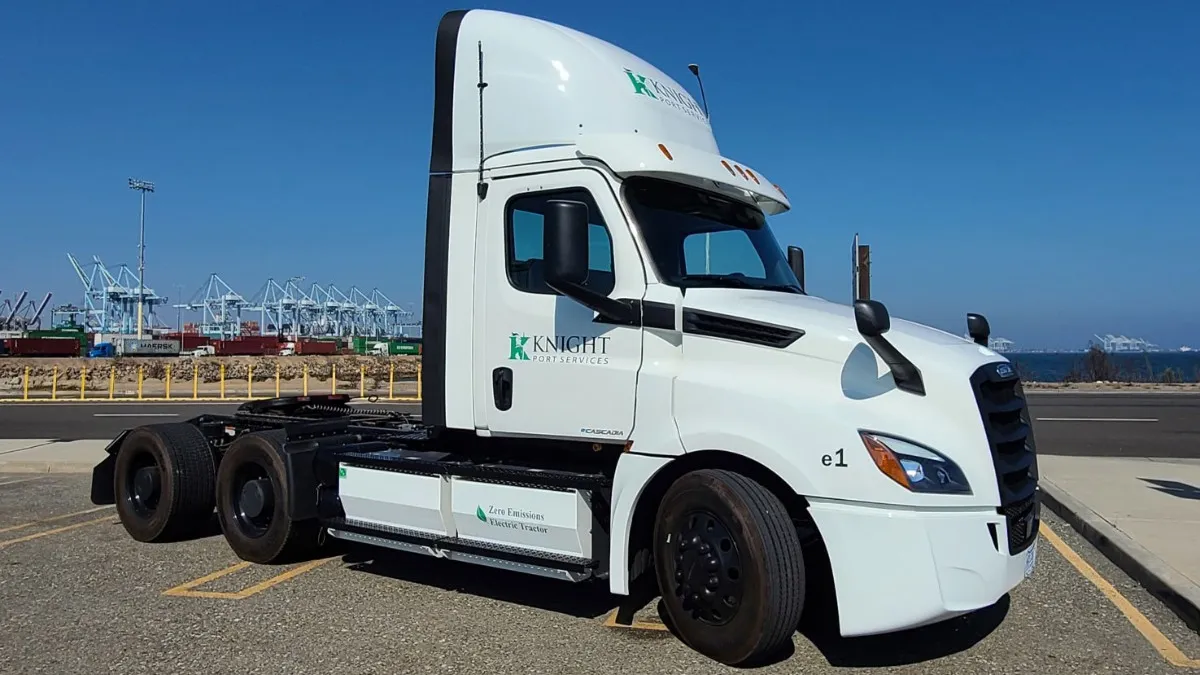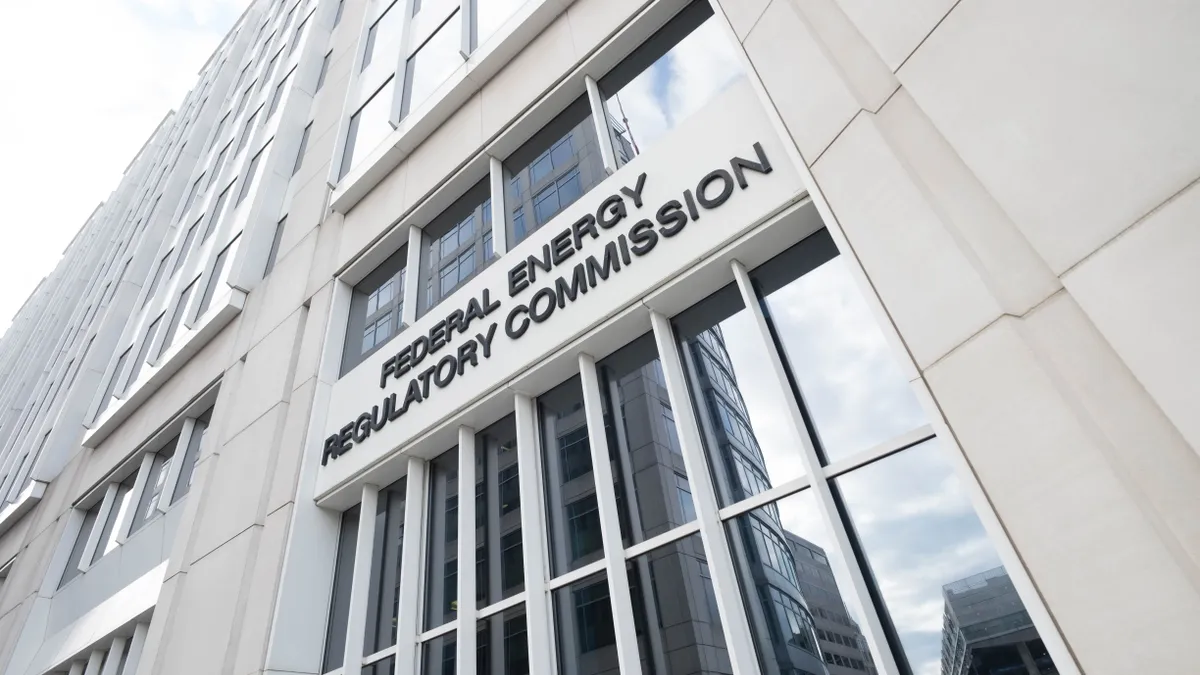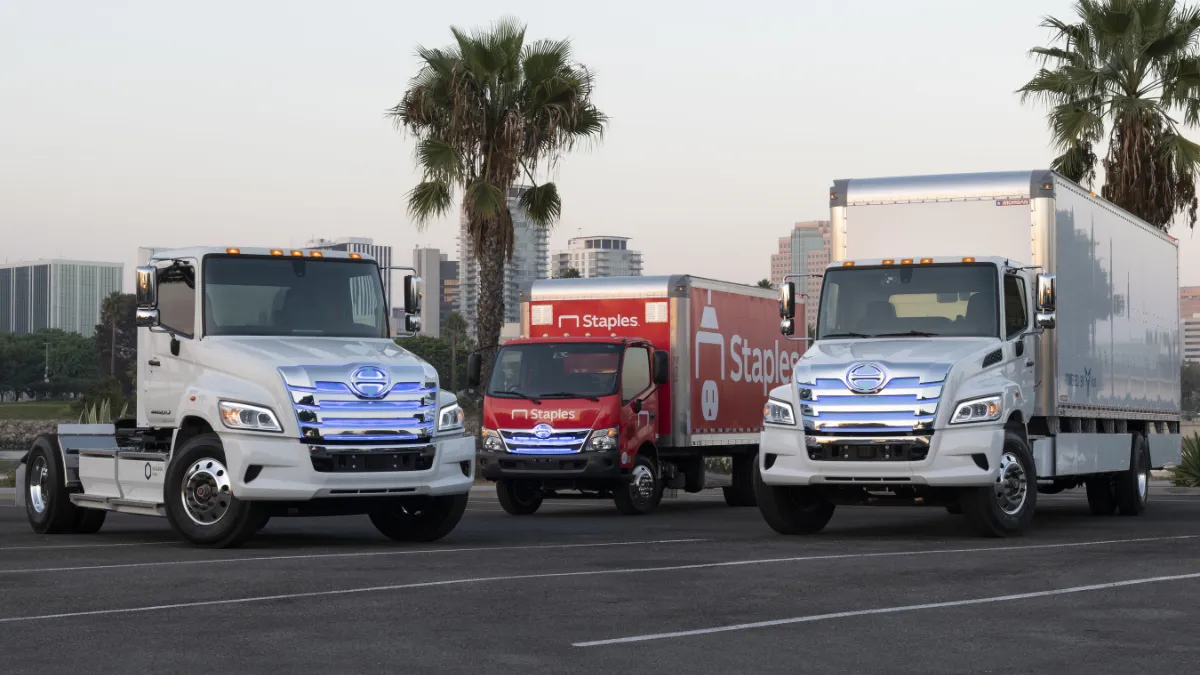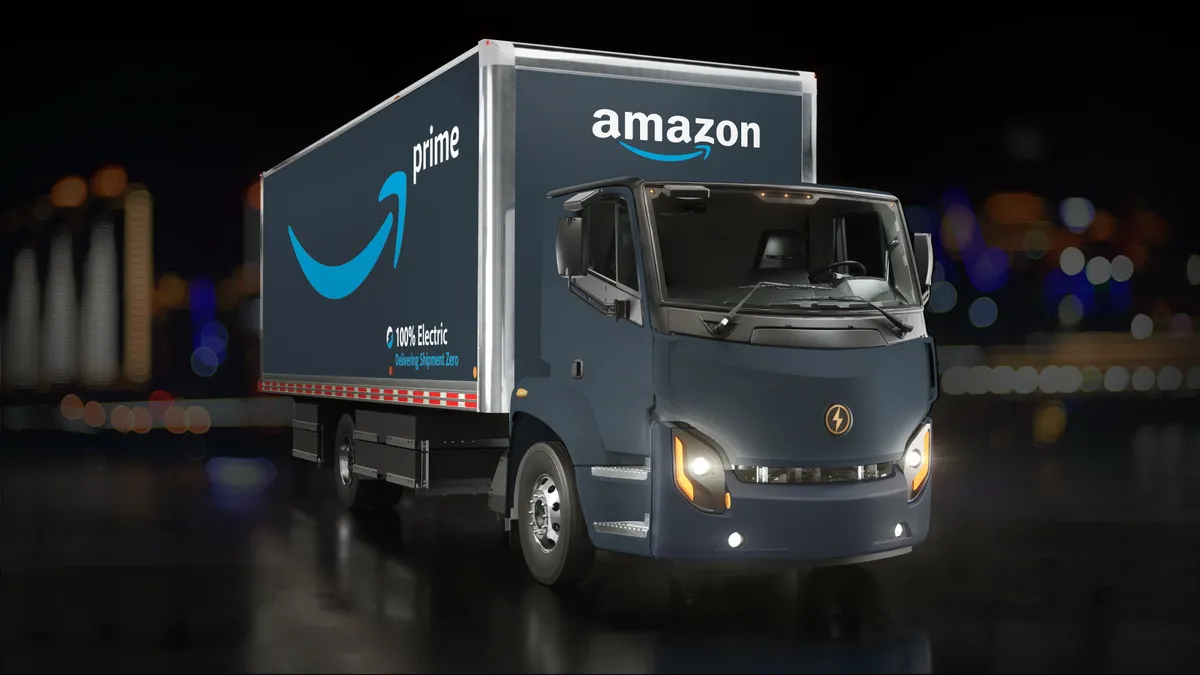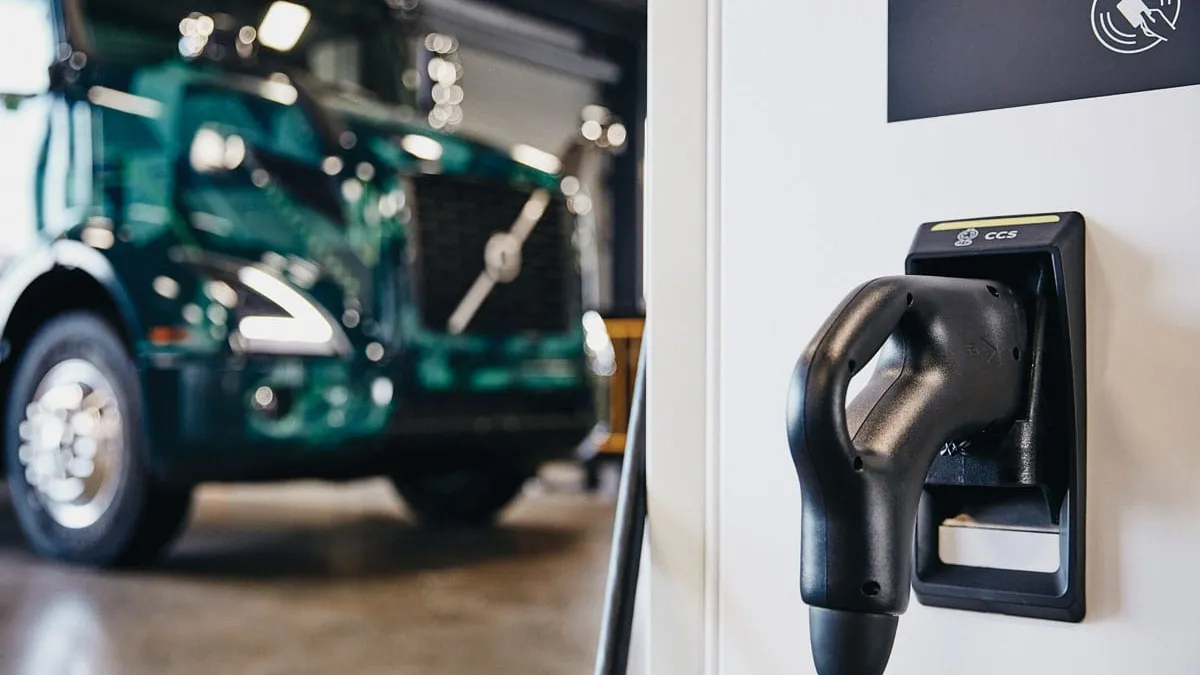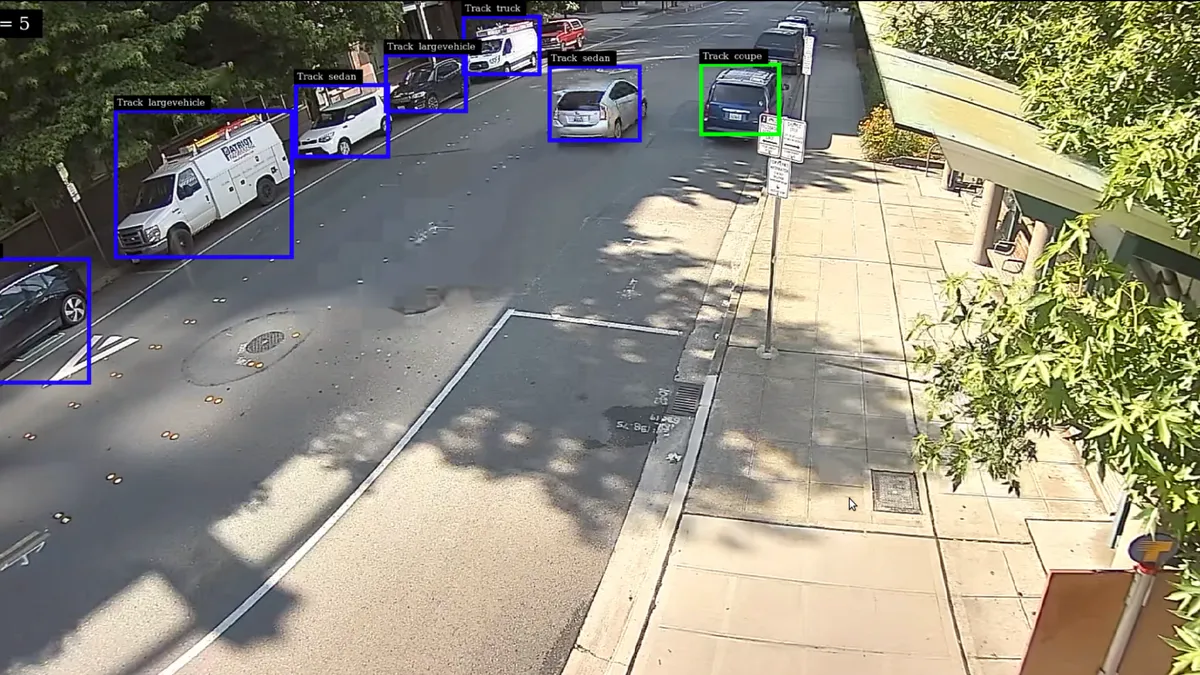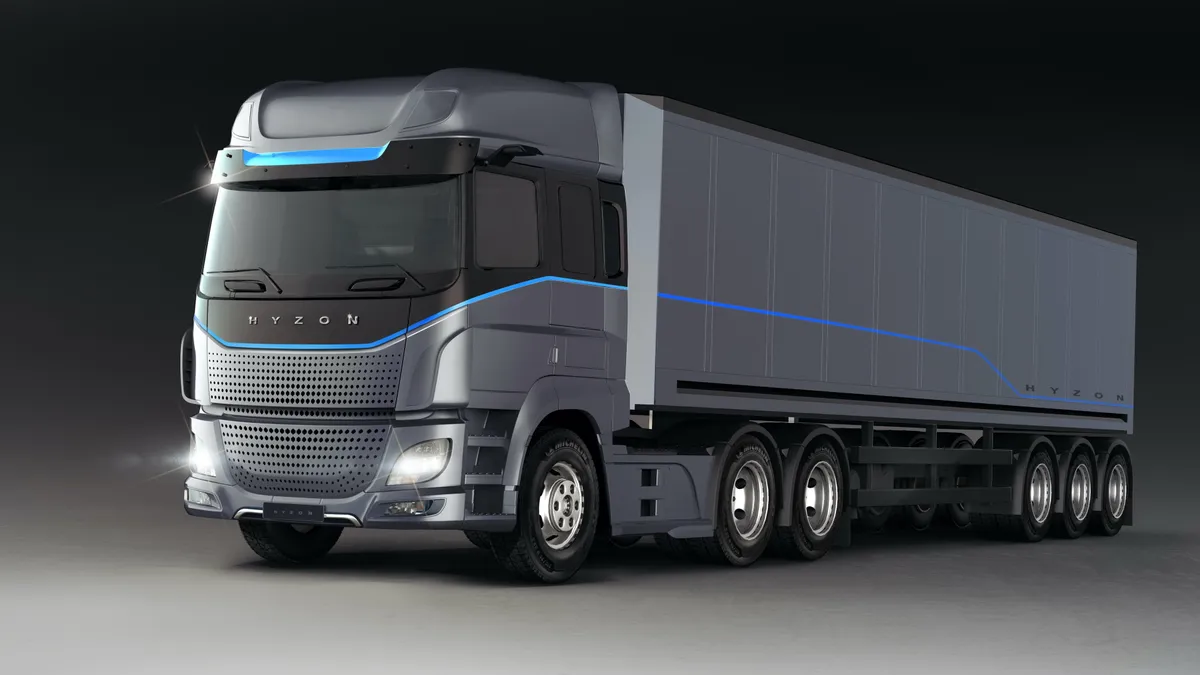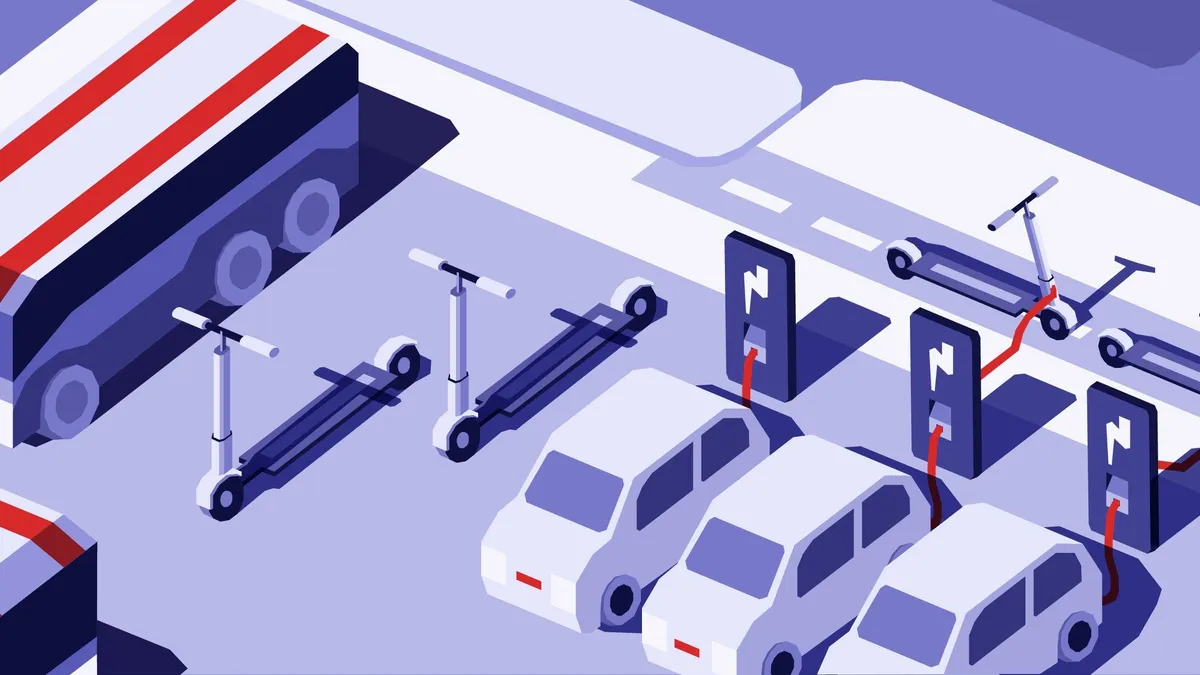Distributed Energy: Page 17
-
Opinion
FERC's opt-out rule has created a stalemate for distributed energy resources and demand response programs
FERC should eliminate the opt-out rule because it is a market barrier that has served no useful purpose in more than a decade, the author writes.
By Kenneth Schisler • April 6, 2021 -
EV charging setup would cost Schneider, NFI more than 10 times annual fuel savings: study
The Environmental Defense Fund called charging infrastructure "the greatest challenge of electrifying heavy-duty trucks."
By S.L. Fuller • April 6, 2021 -
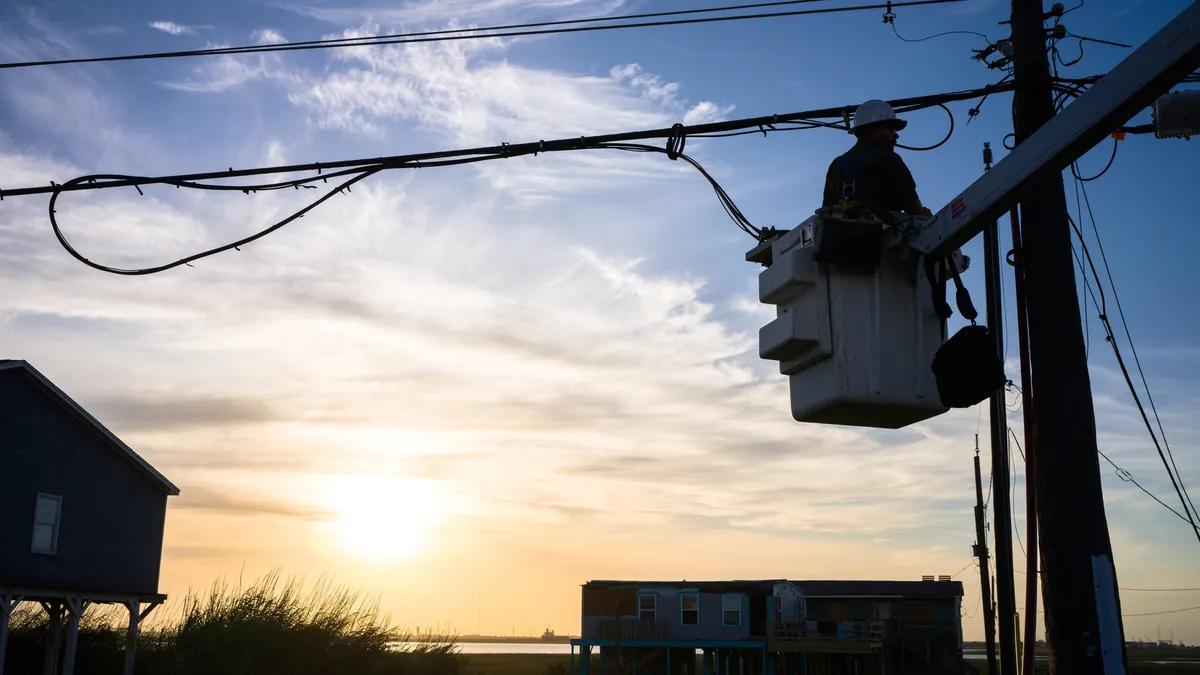 Explore the Trendline➔
Explore the Trendline➔
 Brandon Bell/Getty Images via Getty Images
Brandon Bell/Getty Images via Getty Images Trendline
TrendlineAI in the Power Sector
Artificial intelligence is uniquely positioned to impact the electricity industry from both ends: as the technology driving large load demand growth and as a tool with the potential to make the power system more efficient.
By Utility Dive staff -
Lime introduces its first e-moped fleet in Washington, DC
The company deployed an initial 100 vehicles in the city last week, with Lime CEO Wayne Ting citing the company's commitment to safety as the service's biggest differentiator.
By Chris Teale • April 6, 2021 -
State of the Electric Utility 2021
The 8th annual State of the Electric Utility Survey Report provides a pulse on industry trends from nearly 500 utility professionals, many at the VP level and above, along with insight from a broad range of industry experts.
By Nami Sumida • April 1, 2021 -
Deep Dive
State of the Electric Utility 2021: Gas doubts rise, DER focus wanes, and 5 other key takeaways
Despite the impacts of COVID-19, the energy transition is stronger than ever, the results of Utility Dive's 8th annual industry survey show.
By Larry Pearl • April 1, 2021 -
Zero-emission vehicles 'are coming very fast now,' says author of Congressionally-mandated report
Within 15 years, zero-emission vehicles will be the dominant type of vehicle sold, according to a new report from the National Academies of Sciences, Engineering, and Medicine.
By Robert Walton • April 1, 2021 -
Hawaii groups push for demand-side measures, streamlined interconnection to manage coal plant closure
Regulators in the state are concerned that delays to a series of renewables projects could force Hawaiian Electric to rely on fossil fuel generation after an Oahu coal plant retires in 2022.
By Kavya Balaraman • March 29, 2021 -
Opinion
California wildfires spur re-examination of regulatory barriers to widespread microgrids
Those seeking to build microgrids face long-standing barriers that appear in one form or another in virtually all 50 states, the author writes.
By Peter Asmus • March 25, 2021 -
New coalition calls on Biden admin to prioritize electrified transportation
CHARGE, a group of 37 organizations, is urging EV charging infrastructure be especially deployed in communities traditionally underserved by transportation or that have struggled with pollution burdens.
By Chris Teale • March 25, 2021 -
As EV economics improve, medium- and heavy-duty trucking may be 'next big frontier' for clean transportation
Heavy-duty trucks represent just 5% of vehicles on the road, but experts say they account for more than a quarter of overall U.S. transportation emissions.
By Robert Walton • March 25, 2021 -
Duke, other utilities see dollar signs in becoming EV experts
Prospects for EV adoption are compelling utilities to consider providing related services to fleet customers as a business opportunity, including using EVs as a distributed resource, in concert with solar and battery storage.
By Matthew Bandyk • March 24, 2021 -
FERC prevents states from blocking demand response in DER aggregations under Order 2222
Commissioner Mark Christie, who formerly served as a Virginia utility regulator, decried the move as a violation of states' rights, and argued that it could unnecessarily raise ratepayer costs.
By Catherine Morehouse • March 19, 2021 -
Deep Dive
Amid rising rooftop solar battles, emerging net metering alternatives could shake up the sector
As distributed resource penetrations rise, a shift of costs to non-solar owners due to retail rate net energy metering is driving innovations in policy and rate design that can replace it.
By Herman K. Trabish • March 18, 2021 -
Hino's partnership with Cummins puts it on the fast track to EV production
Moving a timeline forward is a break from the norm, as delays hamper electric truck production at Tesla and Nikola.
By S.L. Fuller • March 18, 2021 -
Lion Electric: EVs save transport firms 80% on energy, 60% on repair costs compared to diesel
The OEM is building a battery manufacturing plant to bring down costs and electrify 14,000 medium- and heavy-duty vehicles per year.
By S.L. Fuller • March 17, 2021 -
Opinion
How to unlock the potential of virtual power plants? Virtualize the grid.
We know from other sectors that tools exist to operate highly complex, distributed systems in an efficient and reliable manner. It's time we applied those lessons to the grid, the authors write.
By Astrid Atkinson, Varun Sivaram, and Richard L. Kauffman • March 11, 2021 -

 Retrieved from Senate Committee on Energy and Natural Resources.
Retrieved from Senate Committee on Energy and Natural Resources.
DOE will spend billions on electric vehicle R&D in jobs fight with China, Granholm says
The U.S. Department of Energy's loan program is "open for business," said Energy Secretary Jennifer Granholm. China has largely cornered the global battery market and she said the United States must catch up.
By Robert Walton • March 10, 2021 -
Deep Dive
'A total mindshift': Utilities replace gas peakers, 'old school' demand response with flexible DERs
Utility-customer cooperation can balance renewables' variability with flexibility without using "blunt" demand response or natural gas.
By Herman K. Trabish • March 8, 2021 -
FedEx to convert parcel fleet to EVs by 2040, eyeing a carbon neutral future
The announcement is part of a broader $2 billion investment focused on clean energy, carbon removal and electrification.
By A.B. Brown • March 5, 2021 -
A growing appetite for EVs tasks the supply chain to scale
Vehicle manufacturers are investing in redundant suppliers and regional networks to keep up with the demand for electric vehicles and boost resiliency.
By Aaron Perryman • March 5, 2021 -
Santa Monica, California, aims to create zero-emissions delivery zone playbook
The city and the Los Angeles Cleantech Incubator's pilot seeks to support local climate goals while solving for curbside woes exacerbated by the pandemic's delivery surge.
By Cailin Crowe • March 4, 2021 -
Why transport buyers tell Hyzon hydrogen is a 'no-brainer'
The original equipment manufacturer is expanding its fuel-cell plant as the competition heats up between electric and fuel-cell trucks.
By Jim Stinson • March 4, 2021 -
Facing an EV boom, AEP, Duke, 4 other utilities unveil plan for multi-regional charging network
The plan would provide electric vehicle drivers with a "seamless network" of direct current fast-charging stations, connecting major highways in the South, Midwest, Gulf and Central Plains regions.
By Robert Walton • March 3, 2021 -
Opinion
Electric cars are not enough. It's time we invest in LEVs.
The increased attention placed on electric vehicles must not leave behind two- and three-wheeled light electric vehicles, Swiftmile CEO Colin Roche writes.
By Colin Roche • March 2, 2021 -
Deep Dive
Texas must increase ties to the national grid and DER to avoid another power catastrophe, analysts say
Planning for inter-regional transmission and distributed resources could do what ERCOT's competitive, energy-only market didn't – keep the heat and lights on, energy advisors say.
By Herman K. Trabish • March 2, 2021


